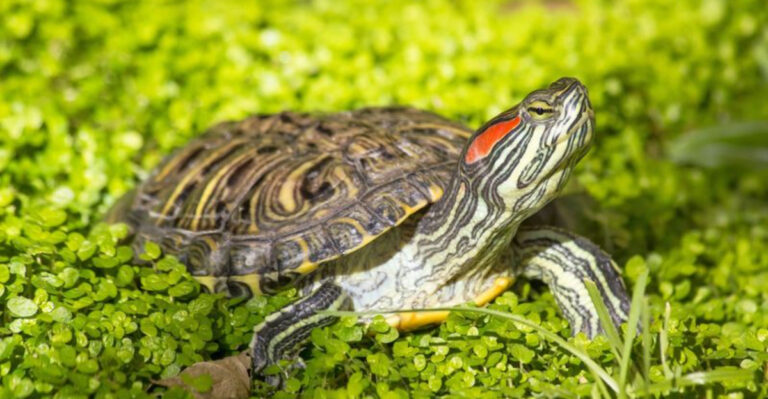14 Sea Creatures You Never Knew Existed
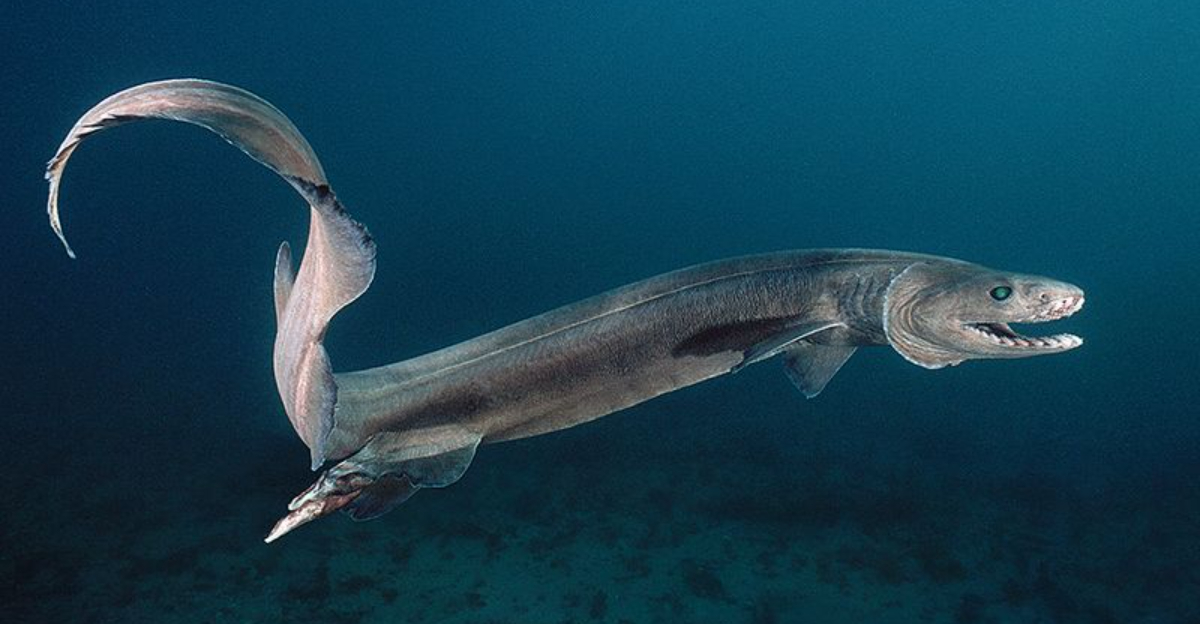
The ocean holds more mysteries than outer space, with vast regions still unexplored by humans. Below the waves live creatures so bizarre they seem straight out of science fiction.
From fish with transparent heads to animals that look like they’re from another planet, these incredible sea creatures prove that truth is stranger than fiction.
1. Transparent Wonder: The Barreleye Fish
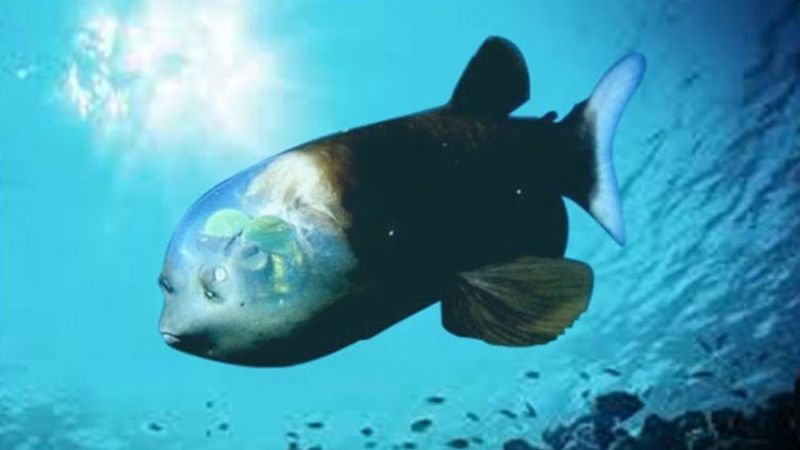
Looking up through its own head might sound impossible, but that’s exactly what the barreleye fish does! Its transparent dome-shaped head houses tubular eyes that can rotate upward to spot prey.
Found in the Pacific Ocean’s deep waters, this remarkable fish was only filmed alive in 2004. Its bizarre appearance helps it survive in the dark depths where food is scarce.
2. Vampire Of The Deep: The Vampire Squid
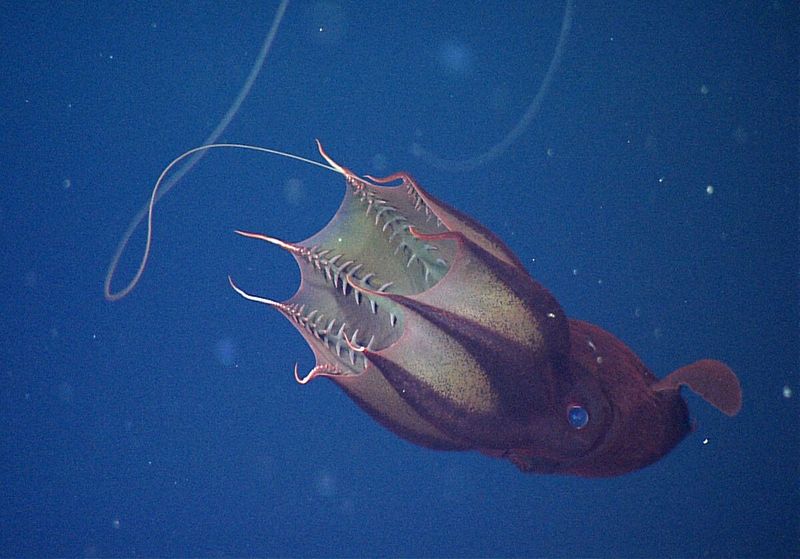
Cloaked in mystery and velvety black skin, this creature isn’t actually a vampire or even a true squid. When threatened, it wraps its webbed arms around its head, resembling Dracula’s cape.
Living in the ocean’s oxygen-minimum zone, this ancient animal can turn itself inside out and produces bioluminescent mucus clouds to confuse predators. Talk about a unique defense mechanism!
3. Living Fossil: The Frilled Shark
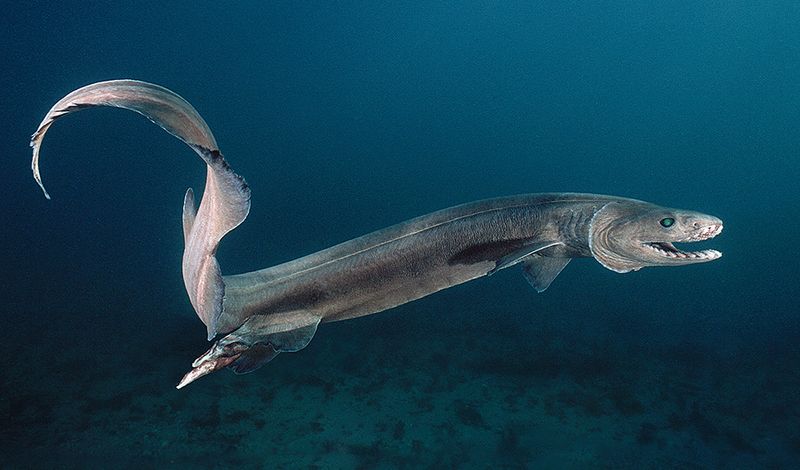
Swimming the seas since dinosaur times, this prehistoric predator looks straight out of a nightmare. With 300 needle-sharp teeth arranged in 25 rows, it’s like a living fossil with an eel-like body.
Scientists rarely spot these deep-sea dwellers alive, making them mysterious ocean ghosts. Their unusual hunting style involves lunging forward to snatch prey with those terrifying teeth.
4. Blob From Below: The Blobfish
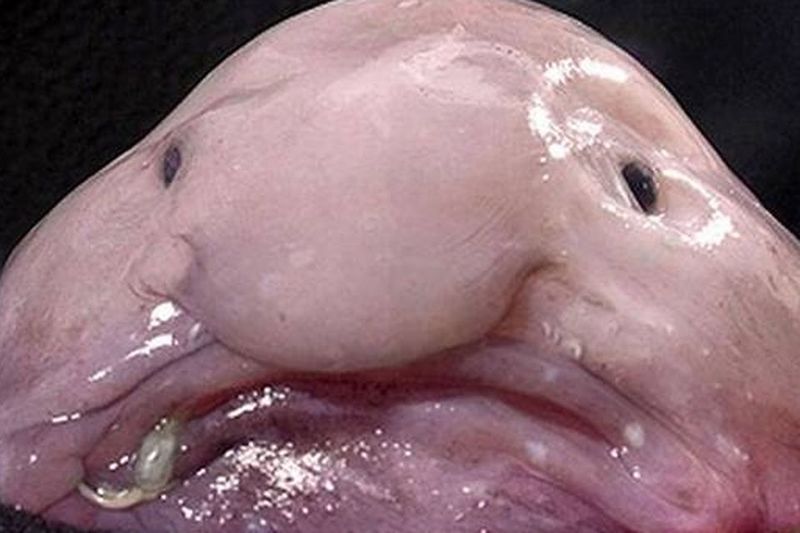
Poor blobfish! Often called the world’s ugliest animal, this grumpy-looking fellow only appears melted and saggy when brought to the surface. In its natural deep-sea habitat, it looks much more normal.
The pressure change causes its body to collapse dramatically. Down in the depths off Australia, the blobfish conserves energy by floating just above the seafloor, gobbling up whatever edible bits drift by.
5. Floating Marvels: Pyrosomes
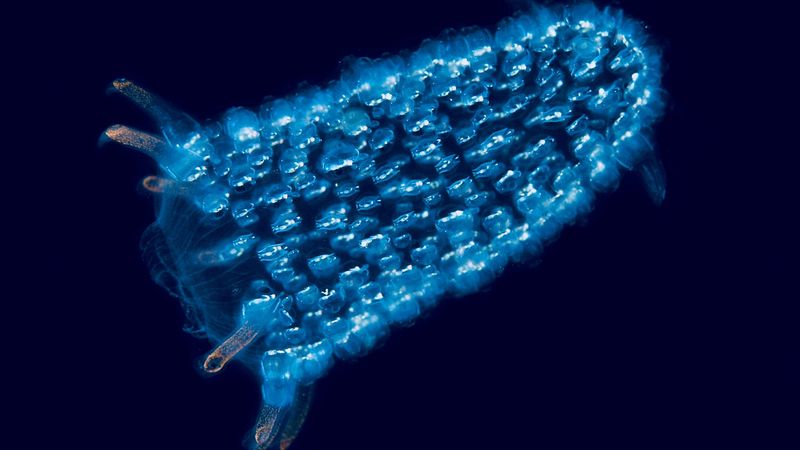
Imagine swimming into a translucent underwater tube that glows blue! Pyrosomes aren’t single animals but colonies of thousands of tiny creatures working together as one floating organism.
Some grow longer than a blue whale, creating spectacular light shows in dark waters. Sailors call them “sea unicorns” for their magical appearance, and divers lucky enough to encounter them describe the experience as otherworldly.
6. Walking Wonders: Frogfish
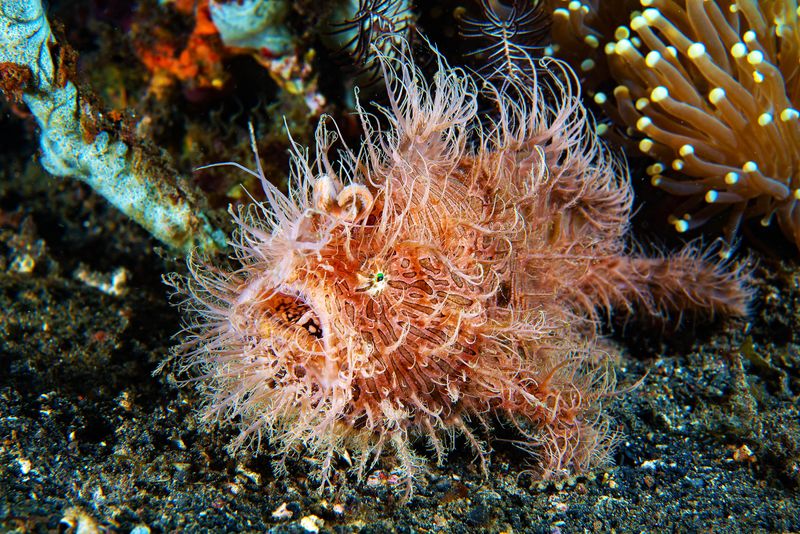
With stubby fins that work like feet, these peculiar fish actually walk rather than swim across the ocean floor! Their camouflage game is unmatched – they can mimic corals, sponges, and even rocks.
A built-in fishing rod topped with a lure sprouts from their heads, tricking prey to swim right into their enormous mouths. These ambush predators can expand their jaws to swallow fish nearly their own size!
7. Oceanic Oddball: The Mantis Shrimp

Forget superhero vision – mantis shrimp can see colors we humans can’t even imagine! Their eyes contain 16 color receptors (compared to our measly three) and can detect ultraviolet light.
Even more impressive is their punch. Their club-like appendages accelerate faster than a bullet, creating an underwater shockwave that can shatter aquarium glass. These colorful little fighters have even been known to break human fingers!
8. Living Balloons: Salps
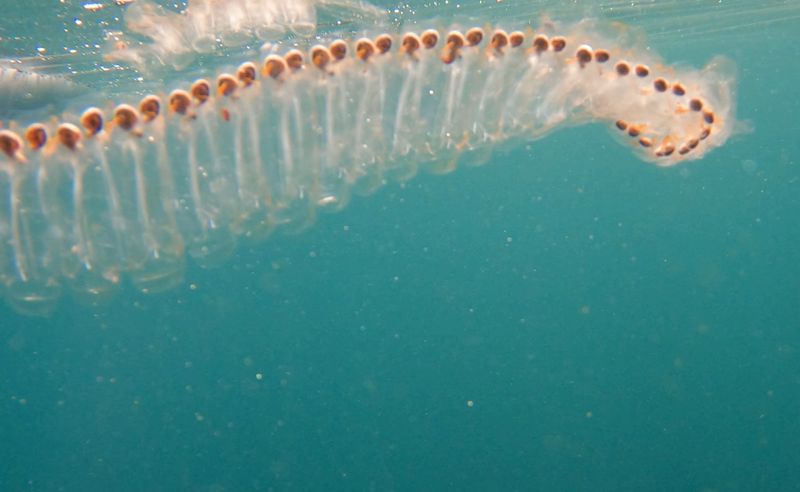
Floating through the ocean like transparent barrels, salps might look like jellyfish but are actually more closely related to humans! These barrel-shaped creatures propel themselves by pumping water through their gelatinous bodies.
Forming chains that can stretch longer than buses, they reproduce with mind-boggling speed. A single salp can create hundreds of clones daily, forming massive swarms that help transport carbon to the deep ocean.
9. Nature’s Lightsaber: The Siphonophore
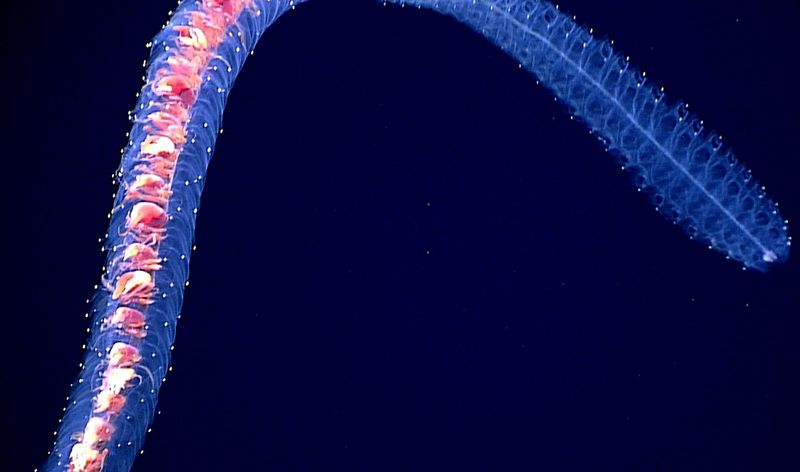
Glowing like underwater neon signs, these bizarre string-like colonies can stretch longer than a blue whale! Each “individual” is actually thousands of specialized organisms working together as one super-creature.
When small fish approach the pretty glow, they’re caught by stinging tentacles. Most siphonophores are too fragile to be studied outside their deep-sea homes.
10. Bubble-Blowing Wizard: The Bobtail Squid
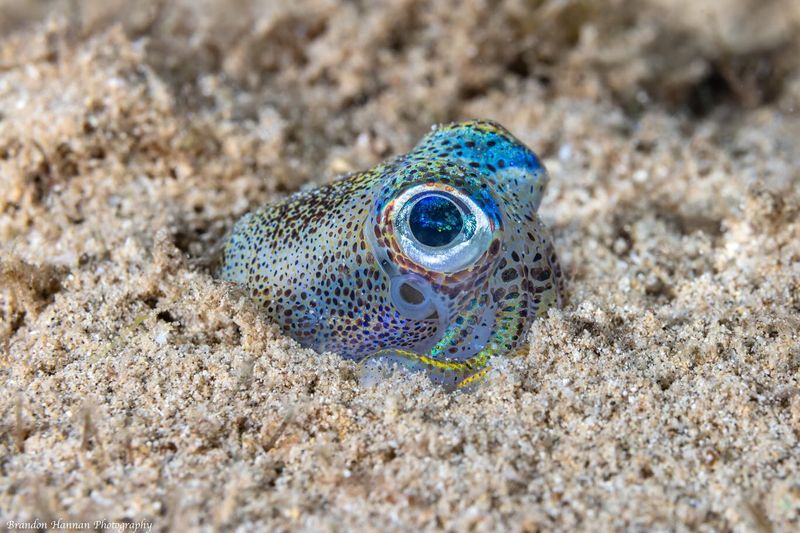
Smaller than your thumb, these adorable squid have a magical trick – they bury themselves in sand with only their eyes peeking out! Their bodies contain special light-producing bacteria that help them match moonlight from above.
This clever camouflage eliminates their shadows on the seafloor, making them invisible to predators swimming below. These pint-sized cephalopods have a symbiotic relationship with bacteria that begins within hours of hatching.
11. Dragon Of The Sea: The Blue Sea Dragon

Floating upside-down on ocean surfaces, these electric-blue creatures look like tiny dragons straight from a fantasy novel! Despite being just inches long, they fearlessly hunt the dangerous Portuguese man o’ war.
Not only do they eat these venomous jellies, but they store the stinging cells for their own defense. Their colorful bellies face skyward as camouflage, while their blue backs blend with the water when viewed from below.
12. Immortal Jellyfish: Turritopsis Dohrnii
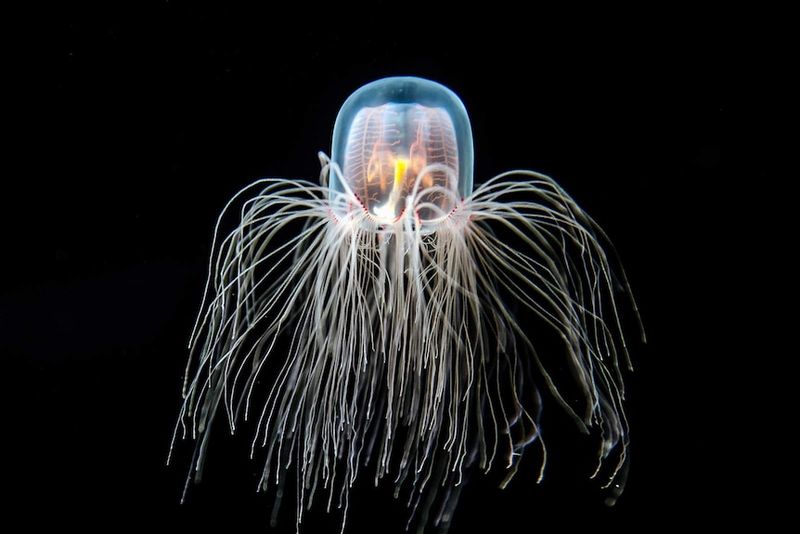
What if you could grow younger instead of older? This tiny jellyfish can actually reverse its aging process when injured or stressed! After reaching maturity, it can transform back into a juvenile polyp – essentially resetting its life cycle.
Scientists believe it could potentially repeat this process forever, making it biologically immortal. Though smaller than your fingernail, this unassuming creature holds secrets that could revolutionize our understanding of aging and cellular regeneration.
13. Undersea Unicorn: The Narwhal
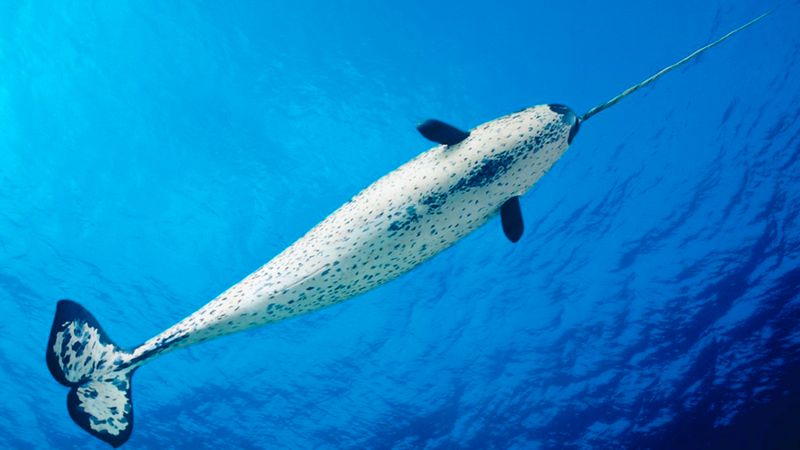
That’s not a horn – it’s actually a tooth! Male narwhals grow a spiral tusk up to 10 feet long that’s actually an overgrown canine tooth that pokes through their upper lip.
Scientists recently discovered these “unicorns of the sea” tap objects with their tusks to sense water temperature and salinity. Unlike other whales, narwhals lack a dorsal fin, helping them navigate under Arctic ice where they spend most of their lives.
14. Sea Butterflies: Pteropods
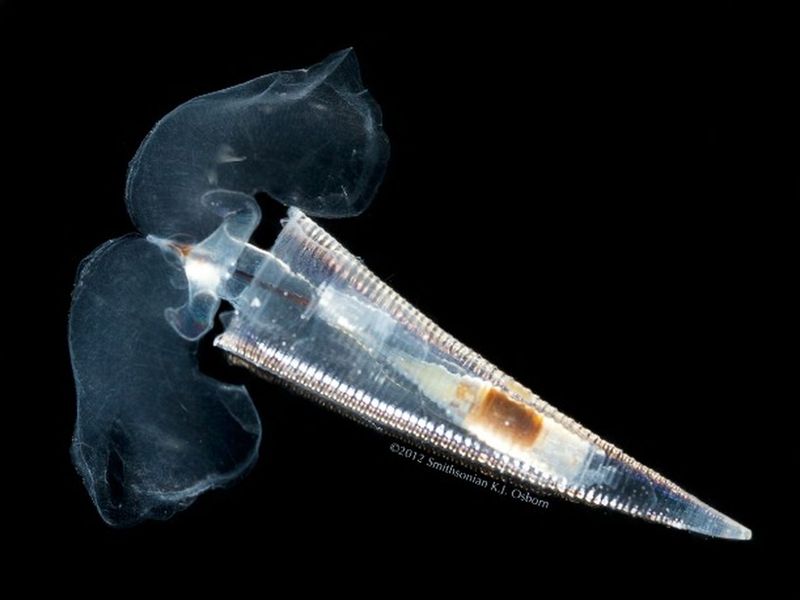
Fluttering through ocean currents like underwater butterflies, these tiny snails have evolved their foot into wing-like appendages! Their delicate transparent shells and graceful movements make them living works of art.
Despite their beauty, they face a serious threat from ocean acidification, which can dissolve their fragile shells. These small creatures play a huge role in marine food webs, feeding everything from salmon to whales.






